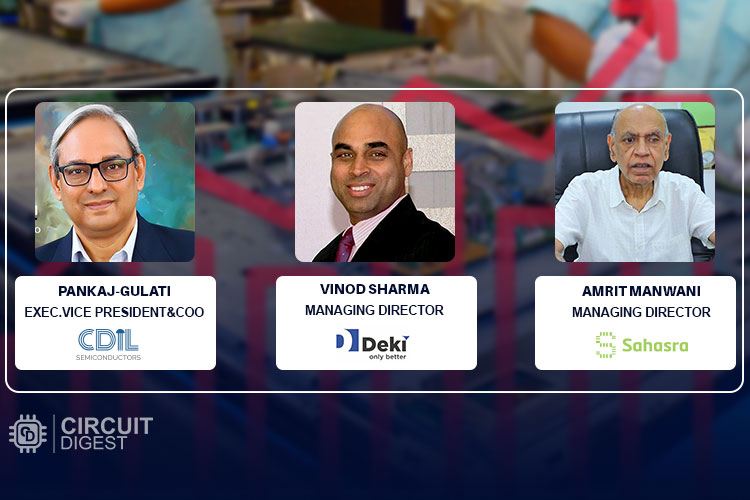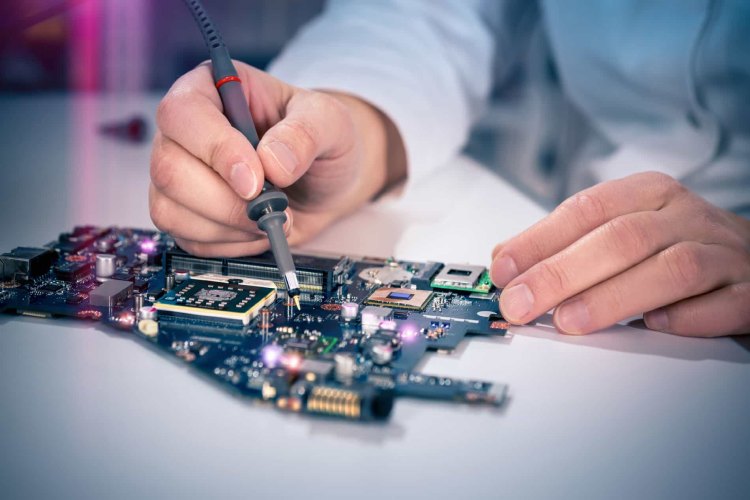
- Although PLI is the most game-changing policy of all, it should reach the smaller companies and target the component sector.
- The PLI scheme will not only make us self-reliant but will also address various security concerns through the import of the IT hardware products.
After the success of the “Make-in-India” initiative and Aatmarnibhar campaign, the union government of India, under the leadership of Prime Minister Narendra Modi, has unleashed numerous schemes and initiatives to bolster the electronics manufacturing ecosystem of the country. The Production Linked Incentive Scheme (PLI) under the aegis of National Policy on Electronics proved to be a game-changer for the industry, claims experts. The schemes have helped the government achieve a target of $300 billion worth of production by the end of 2026.
The growth in exports and production in the electronics industry has also helped the country escalate its macroeconomics globally. In the financial year 2022, the contribution of the domestic production value of electronics to the Indian GDP was about 2.7 percent. This contribution is estimated to increase to 4.7 percent by the financial year 2026 in the country. In a very short span of time, the government, in association with industry bodies and manufacturers has changed the dynamics of the electronics manufacturing ecosystem. It is event that COVID-19 has spurred the demand of electronics and semiconductors all over the world, but demand has already augmented with the proliferation of the internet and increased pace of digitization. There are hardly any industrial sectors that can survive without electronics. From smart homes to automobiles, FMCG, and other sectors, electronics have dominated most of the industrial sectors.

When the pandemic hit the world, anti-China sentiments started growing in India, the US, Europe, and in several nations. In fact, global companies such as Foxconn, Intel, Samsung, and others started finding alternatives other than China to set-up their production units. Apart from Vietnam and the Philippines, India is the most preferred destination among global companies. Geopolitically speaking, the ‘China Plus One’ Strategy is already helping India grow its ESDM sector in various ways, and the alliance with the USA will give India further impetus to boost its semiconductor industry both in terms of investment and revenues.
In an interaction with India’s electronics manufacturing experts, let’s find out how the nation’s electronics industry has grown in the past ten years and how it will elevate its position in the global value chain in the coming years.
Vinod Sharma, managing director, Deki Electronics
Q. How do you think India’s electronics manufacturing ecosystem has grown in the past ten years? What is the current position of the country’s ESDM sector when compared globally?
India’s electronics manufacturing ecosystem is certainly growing very rapidly, but most importantly, the industry today believes that it has the potential to grow globally. India is now becoming a favored destination for electronics manufacturing. In the last ten years, the industry has grown well, backed by government policies and incentives like M-SIPS, SPECS, EMC 1.0, and EMC 2.0. Most importantly, the PLI is a game-changer, which has triggered the industry, and loads of investments have happened under this scheme. But the majority of investments happened mostly in the area of assembly.
Q. How the policies unleashed by the union cabinet proved to be a game-changer for the ESDM ecosystem?
For instance, the PLIs for IT hardware, mobile phones, LEDs, and consumer electronics have mostly sparked the assembly department. It incentivizes locally made components, but in the last ten years, we have become a huge assembler and exporter at the same time. We are expecting that there will be some sort of incentives given by the government in component manufacturing. Third most important thing is that India is now designing products for other countries, but we have to start designing our own products as we are becoming globally competitive. Although PLI is the most game-changing policy of all, it should reach the smaller companies and target the component sector. It mostly attracted the larger companies because the investment ratios are very high. We now have to think out of the box because we need all types of components to grow the industry.
Amrit Manwani, founder and managing director, Sahasra Industries
Q. Do you think there is a sea change in the growth of India’s Electronics industry in the past several years? Can you paint the picture of the current status of the industry?
The industry has seen sea change towards policy for this sector. In the last ten years, the electronics industry has seen a proper direction that has helped to expand its presence in the global market. All the three PLIs which have been announced in the last three years including the SPECS scheme have boosted investments in the sector. Looking ahead in the next few years, we see tremendous growth potential in electronics manufacturing in the country for a variety of reasons. One, the domestic demand is growing tremendously. Due to geopolitical reasons, the world is now looking at “China Plus One”. Earlier, the entire world went to China because of price competitiveness, and they would be able to set-up industries very quickly for large-scale manufacturing. Not only America, but the whole world is also now looking for alternative sources of manufacturing that will help India to boost its growth.
Q. How have the schemes and policies targeted global firms and how they have helped grow the industry at a large-scale?
As far as PLI for IT hardware 2.0 is concerned, this should actually stimulate the manufacturing of IT hardware products in India, which has witnessed a very nominal growth in the last seven decades. In the coming five to six years, this scheme will pose a significant growth in electronics manufacturing. It will not only make us self-reliant but will also address various security concerns through the import of the IT hardware products.
Pankaj Gulati, COO, Continental Devices India
Q. How India’s electronics industry has transformed in the past few years and how the policies and the incentive schemes have boosted the sector?
The past couple of years have been landmark years for the industry. It saw the EMS industry come of age and the mobile phone manufacturing reaching new heights each year. This has happened due to the focus approach of the government which intervened and introduced some marginal import duty. The phased manufacturing programmer helped the growth of the industry. However initially it was only for EMS and mobile industry but in the last 3 years have seen introduction of policies to support the component manufacturing though mainly Semiconductors. For instance, CDIL was one of the first companies to apply and get an approval under SPECS. The project was successfully implemented and the plant under the SPECS was inaugurated in Sept 2023. This encouraged us to apply under India Semiconductor Mission (ISM) scheme and a fresh proposal has been filed for over Rs. 100 Cr for Discrete Semiconductor OSAT. The proposal is under consideration by the ISM.
![]()
Q. How do you think the ESDM sector in India will grow in the coming few years?
The coming years present a great opportunity for the industry, especially semiconductor. The ISM scheme of 50 percent parri-passu is one of the best in the world. India needs major improvement in the infrastructure and the ease of doing business - we can see it happening but possibly we need it at a faster pace. The government support, MeitY policies and formation of ISM - all this is presenting wonderful opportunities for the industry.
In the last ten years, the electronics sector has grown exponentially in all spheres of the usage of our lives. We have now moved successfully from manual payments to digital payments since 2014. To bolster growth of this sector, the government has started offering lots of incentives, schemes, subsidies such as SPECS, PLI, EMC and magnetized investments from overseas companies. I personally feel that the Capex system has bolstered the component ecosystem and PLI has helped the finished goods sector. It would be great if there is an additional PLI dedicated for the component sector. In the coming ten years, I believe that we will definitely reach the target of $300 billion in electronics manufacturing.

